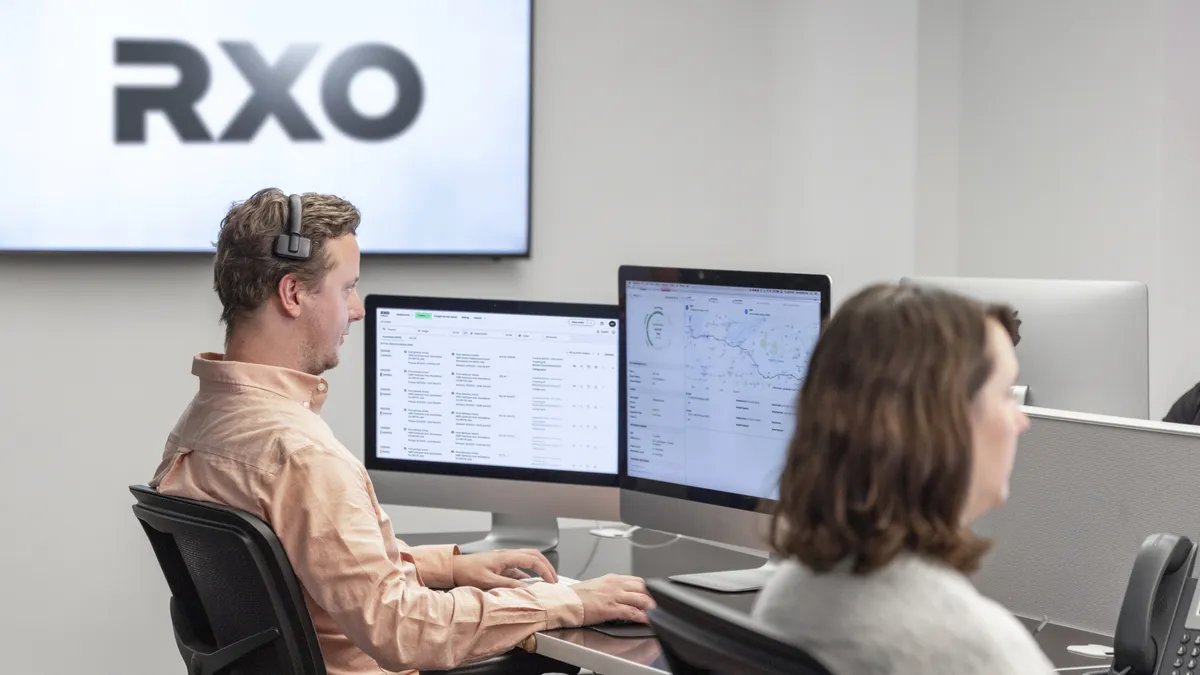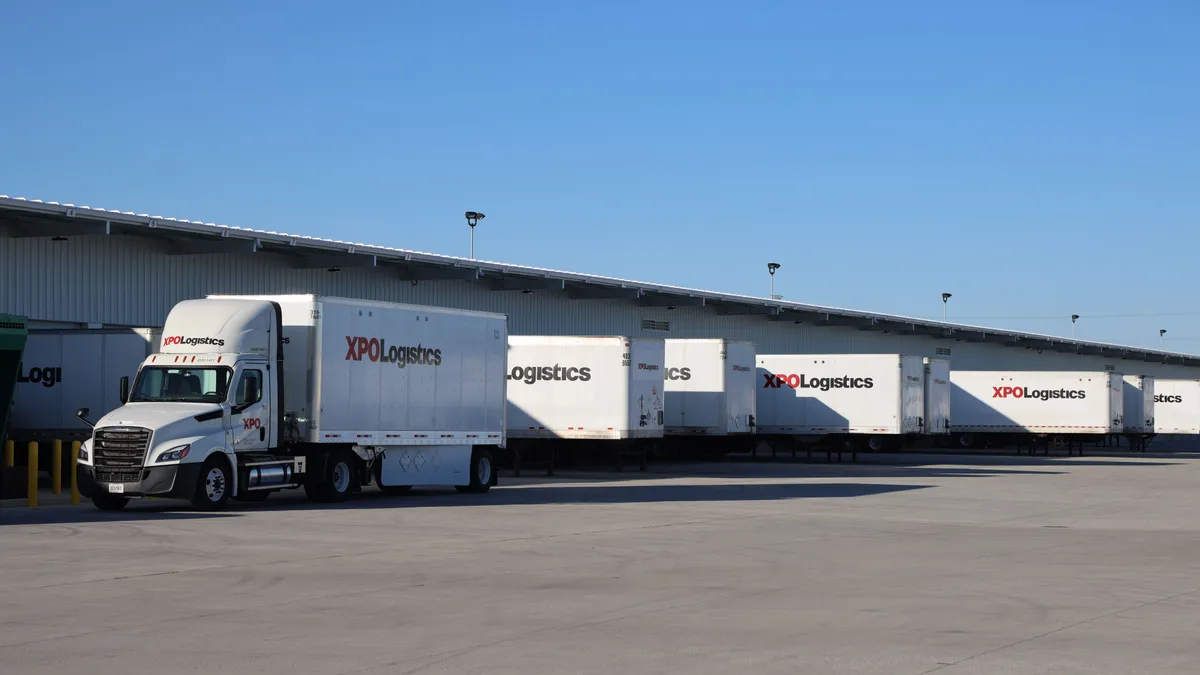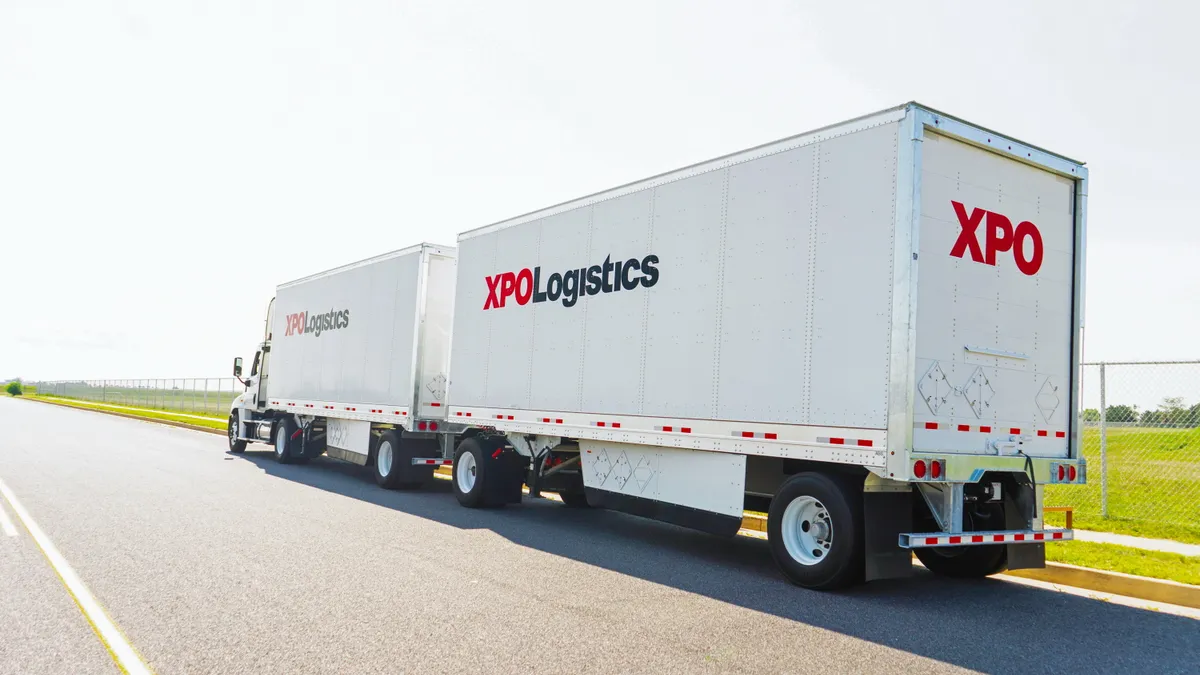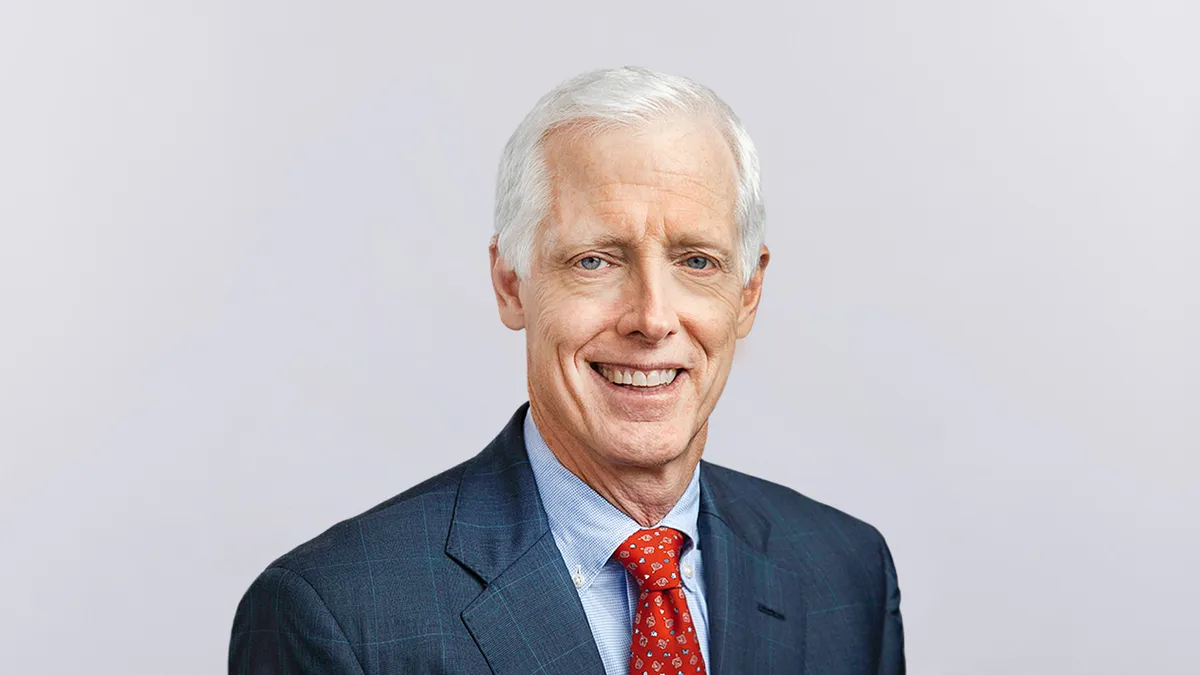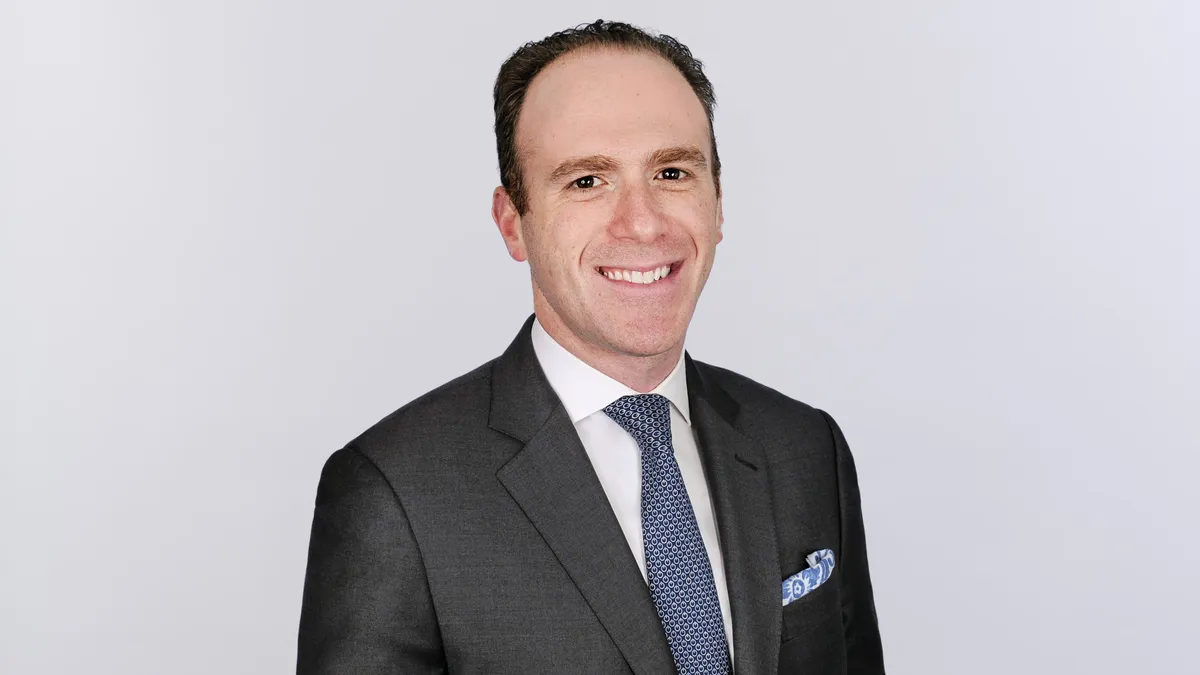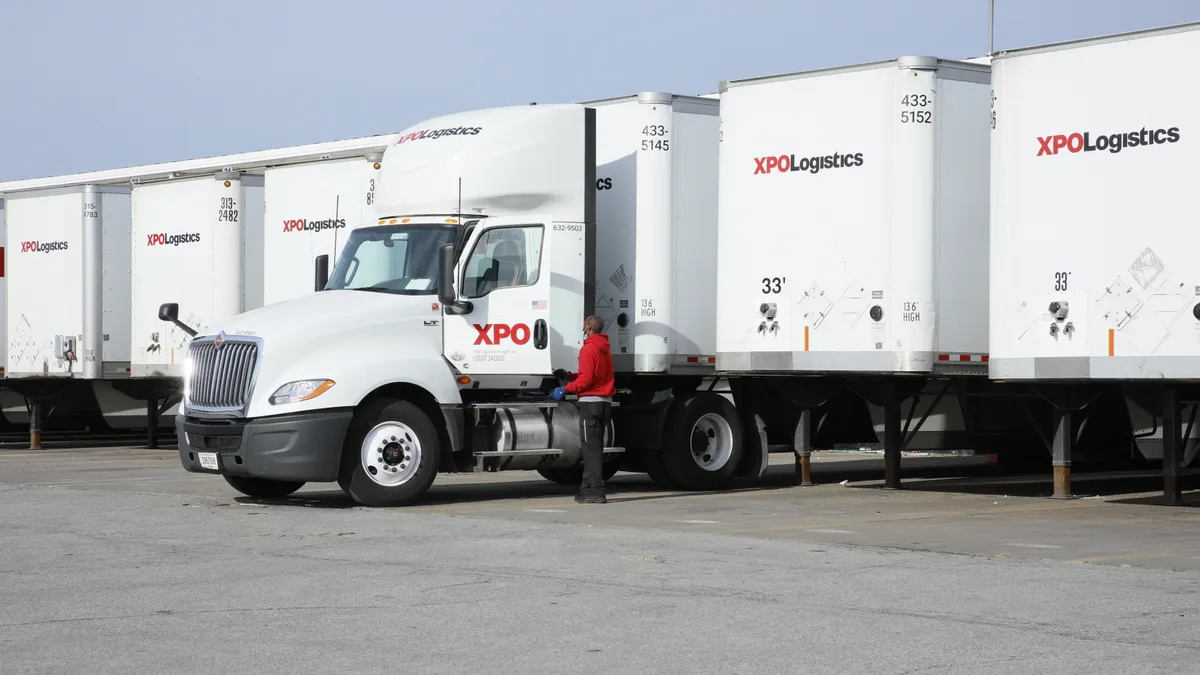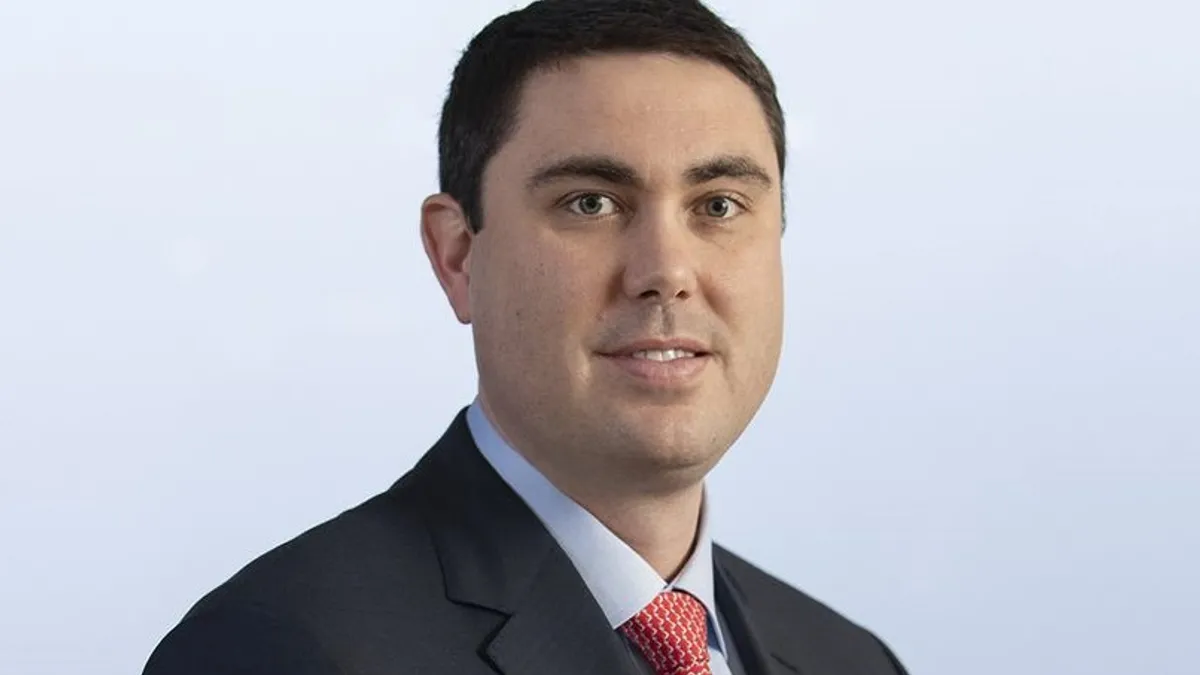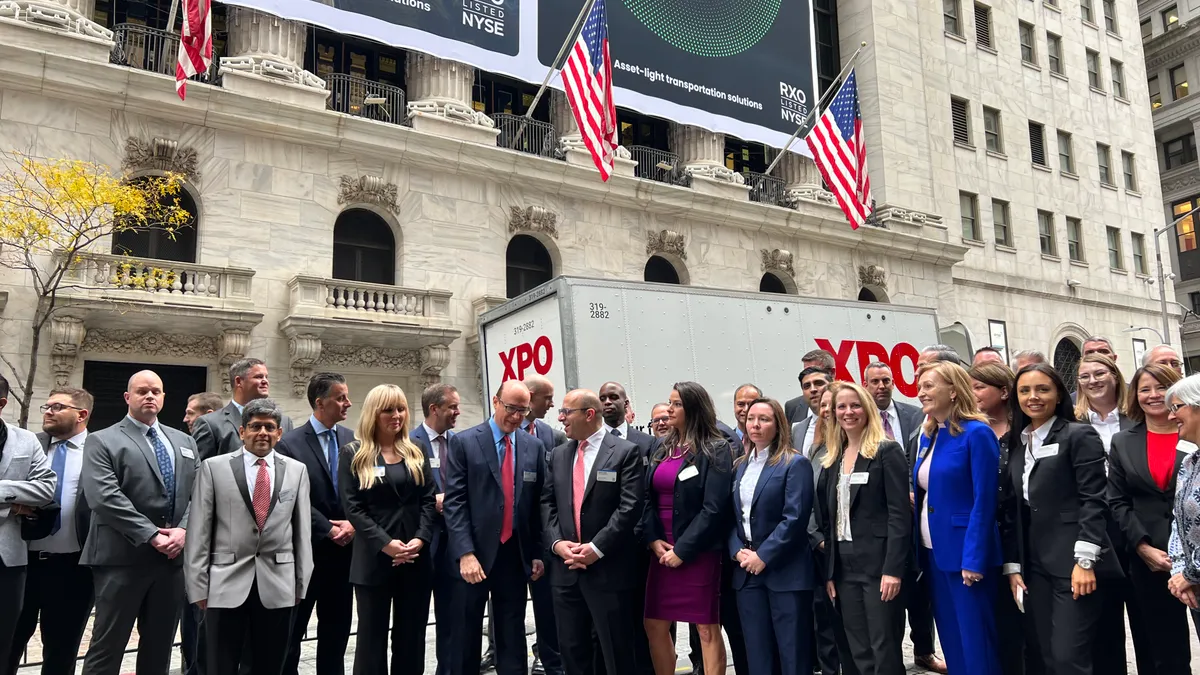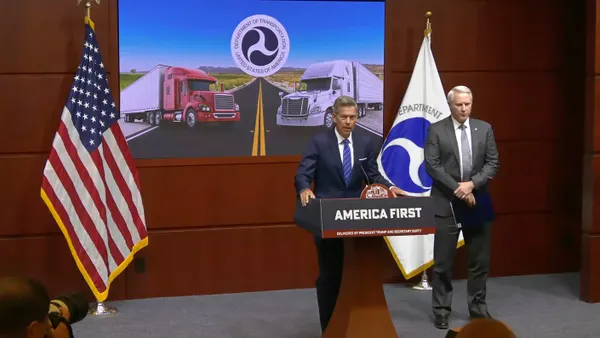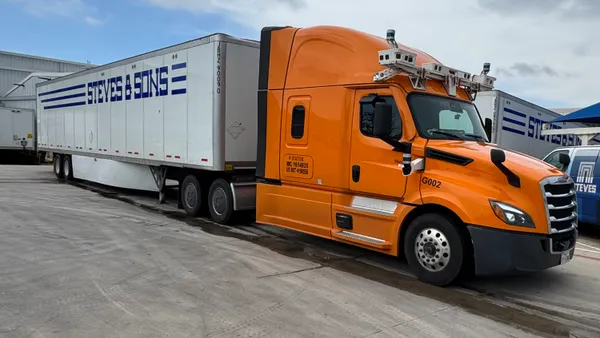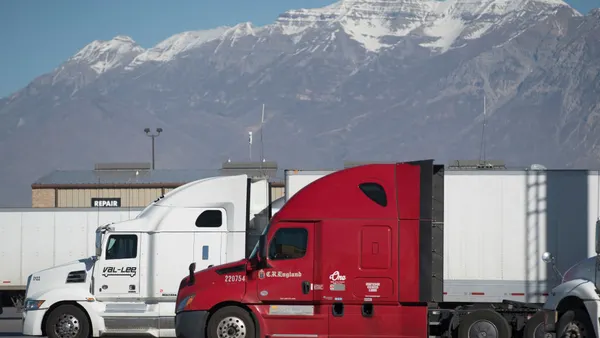Preparing to spin off from XPO Logistics, RXO is noting potential growth as a trucker brokerage business but also possible complications of its customer mix.
The new company posted a securities document Sept. 28 that shared breakdowns of how much revenue it brings in from its approximately 10,000 customers. Most of last year's revenue came from 100 of those businesses.
"We derive a significant portion of our total revenue from our largest customers," the filing said in a letter for shareholders. "The sudden loss of one or more major customers could materially and adversely affect our operating results."
The note of caution was one of dozens of risks listed by RXO and part of disclosure reporting that companies are required to divulge to shareholders.
RXO stated further that its top five customers provided approximately 19% of its consolidated revenue in 2021. In contrast, ArcBest Corp.'s 10 largest customers accounted for approximately 9% of its consolidated revenue the same year, but it represents a different business model as a logistics and freight provider.
Satish Jindel, president of SJ Consulting Group, said in an email it's common for logistics providers' top 10 customers to make up 20% or 30% of revenue. He added that such a mix can be as much as 50% for smaller companies with revenues in the few hundreds of millions of dollars.
Instead, investors generally take note when a single customer makes up 5% or more of a company's revenue, but that's not a major concern unless it exceeds 10%, Jindel said, noting Amazon is UPS' largest customer and is projected to produce around 11% of its revenue this year.
RXO said in its filing that its largest customer made up approximately 8% of its consolidated revenue in 2021.
In comparison, no customer accounted for more than 4% of Landstar System's revenue in fiscal year 2021, and C.H. Robinson Worldwide's largest customer represented approximately 2% of total consolidated revenue last year, according to annual reports.
Overall, RXO's customers range from small business to Fortune 100 companies, covering a mix of retail, e-commerce, automotive, food and beverage, industrial and manufacturing, agriculture and chemicals, logistics and transportation and consumer goods, the company said in the filing.
"RXO has a diverse customer mix with approximately 10,000 customers," spokesperson Nina Reinhardt said in a statement. "Last year, RXO served more than 50 of the Fortune 100 companies and more than 200 of the Fortune 500."
The spinoff looks to launch Nov. 1, and it projects it will be the fourth-largest broker of TL freight in the U.S.
"Management hopes that the spin will unlock shareholder value by boosting the multiples of both stubs, which will now be cleaner stories that can be more attractive to pure-play asset-heavy LTL and asset-light broker investors," Morgan Stanley analyst Ravi Shanker and research associates wrote in a July 8 report.
RXO’s filing also noted its potential for growth. It stated that, as of the end of last year, it only represented an approximately 4% share of the $88 billion brokered TL industry but has noted “significant opportunity” for increasing its market share.
"Notable factors driving growth and margin expansion in our business include our ability to access massive truckload capacity for shippers through our carrier relationships, our proprietary, cutting-edge technology, our strong management expertise and favorable industry tailwinds,” the filing said.



